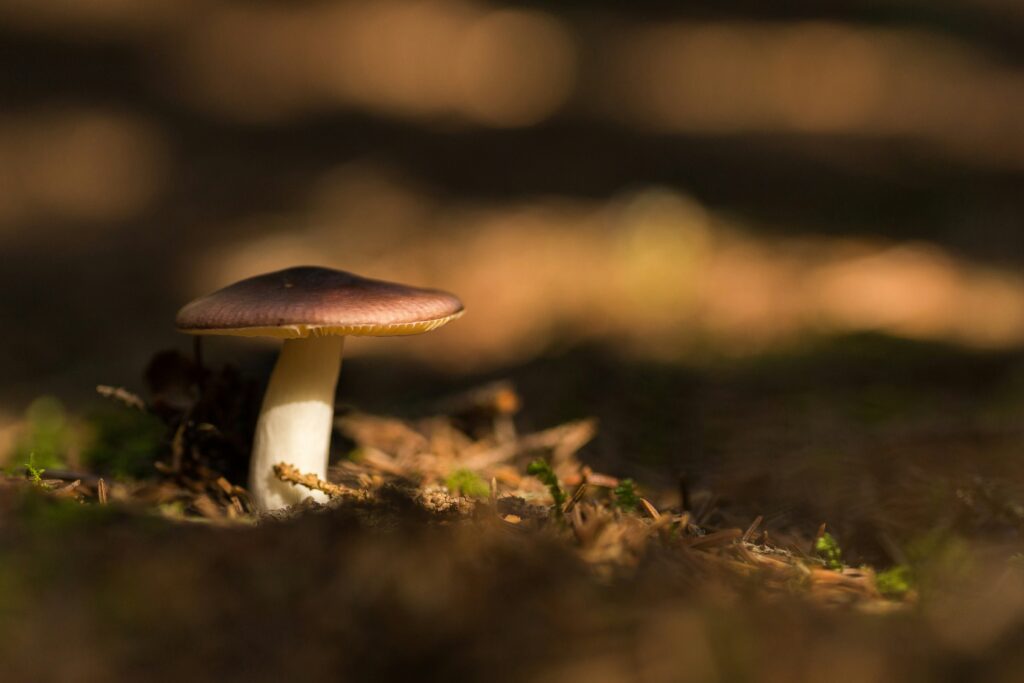Just below the surface of virtually countless terrestrial ecosystems, a silky, thread-like network called Mycelium is regulating & distributing nutrients to all sorts of organisms within its boundaries. A proud member of the fungi kingdom, Mycelia are one of nature’s recyclers and can stretch for thousands of meters deep beneath soil, though its diversity in role as a plant distinguishes it from its fellow decomposers. Well what exactly does it do?
To start, Mycelium roots, or Hyphae, have the ability to connect the roots of various plants & trees, creating a complex, multifunctional web. One feature of this network is nutrient exchange. Carbon, nitrogen, phosphorus, and other vital elements can be sent from one organism to another through the fungi if there’s any to spare, which is universally beneficial and enhances collective resilience/stability. In addition, Mycelium can also absorb energy from its surroundings by secreting digestive enzymes then actively transporting the monomers in, integrating another food source into the web and supplying its partners with soil resources that may be difficult to access otherwise. The other major aspect of Mycelium is its enabling of plant to plant communication. Chemical signals can be sent through the roots to warn of dangers, triggering defensive responses in the recipients. While these remarkable qualities all sound great, they mostly pertain to and are associated with the Mycorrhizal subgroup of Mycelium. The two other main types are the Saprotrophic & Parasitic classes, both with different attributes and properties. Saprotrophic Mycelia have roles closer to traditional fungi, that is breaking down organic matter and nurturing a more fertile habitat. On the other side of the spectrum, Parasitic Mycelia are detrimental to their hosts and extract valuable nutrients from them, which I guess can also be considered pretty traditional.
In today’s world, Mycelium is being utilized and experimented with for various purposes. Bioremediation (pollution cleanup), sustainable packaging, textile production, and medicine are all fields with big plans for the fungi. While these modern applications do have potential, it’s hard to find a use more significant for Mycelium than its age-old role under the soil as one of the most versatile organisms on the planet.

